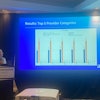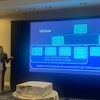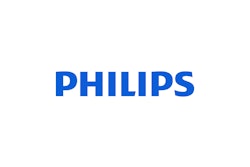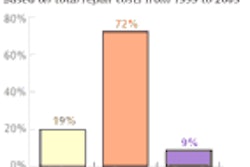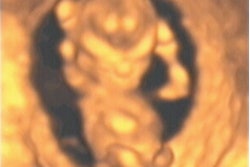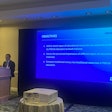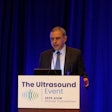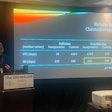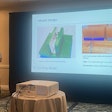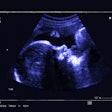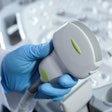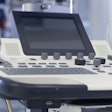Seven organizations from the imaging and surgery fields have convinced four U.S. Congressmen to sponsor a bill directing Medicare to cover ultrasound screening for abdominal aortic aneurysm (AAA).
If passed, the proposed legislation would likely inspire millions of new ultrasound screenings each year. Radiologists would also see an increase in patients subsequent to screening, as smaller aneurysms would be monitored with imaging and larger aneurysms would require preoperative imaging and perhaps endovascular repair.
Recent studies have shown that ultrasound screening for AAA could be highly cost-effective. But it may be hard to sell Congress on the addition, given concerns about Medicare’s overall financial outlook resulting from recently approved pharmaceutical coverage for seniors.
"It will be very difficult to add a new benefit to the Medicare program for the next few years," said Cynthia Moran, assistant executive director of government relations for the American College of Radiology of Reston, VA.
The bill's primary Congressional sponsors -- Sens. Christopher Dodd (D-CT) and Jim Bunning (R-KY), and Reps. Gene Green (D-TX) and Jim Greenwood (R-PA) -- are expected to introduce the legislation within the next two months.
It is likely, however, that the proposal will ultimately be folded in with technical corrections to the Medicare Modernization Act in 2005, where the screening may have a better chance of passage.
"We are absolutely convinced -- in looking at how successful screening programs can be and have been, and looking at the economic modeling that we’ve done -- that this is a no-brainer for the Medicare program," said Bill Sarraille, the Washington, DC counsel for the newly formed National Aneurysm Alliance. Sarraille is also a partner at Sidley Austin Brown & Wood of Washington, DC.
Based on a plan to pay for AAA screening of any man over age 65 and any woman with additional risk factors over age 65, the program is expected to cost $200 million-$600 million over a 10-year period, Sarraille said.
The major determinant of cost would be the reimbursement scheme, which would likely be determined in a regulatory process after the bill’s passage.
Medicare doesn’t ordinarily pay for screening of beneficiaries who are asymptomatic. However, over the years Congress has specifically authorized the federal program to cover a half-dozen screening exams, including mammography and bone-mass measurement.
The cost-effectiveness of AAA screening appears similar to that of screening mammography, according to a recent consensus statement published in the Journal of Vascular Surgery (January 2004, Vol. 39:1, pp. 267-269).
Studies have put the cost per quality-adjusted life year (QALY) saved for AAA screening of men older than 60 years at $11,285, compared to $16,000-$20,000 for screening mammography, the authors wrote.
Aortic aneurysms also kill nearly as many people as conditions that are already subject to screening. An estimated 30,000 Americans die each year from ruptured AAA, compared to 32,000 annual deaths from prostate cancer and 42,000 from breast cancer.
Nonetheless, the push for AAA screening represents a big change since 1996, when a report for the U.S. Preventive Services Task Force found "insufficient evidence to recommend for or against routine screening of asymptomatic adults for abdominal aortic aneurysm with abdominal palpation or ultrasound."
While AAA can be detected by multiple means, including radiography, CT, and MRI, ultrasound appears to offer the best combination of high sensitivity and specificity and lower cost. A number of mainly European studies have established the effectiveness of ultrasound AAA screening in recent years.
The National Aneurysm Alliance was founded late last year by the Society of Vascular Surgery. It includes the ACR, the Society of Interventional Radiology, the Society of Vascular Ultrasound, the Society of Diagnostic Medical Sonography, the American Society of Echocardiography, and the American College of Surgeons.
Also supporting the effort are the National Electrical Manufacturers Association and vendors including Sonosite, Medtronic, Cook, Philips Medical Systems, and Siemens Medical Solutions, according to Sarraille.
While Sarraille is prepared for a multiyear effort to get AAA screening coverage, he expressed optimism that the proposal will ultimately be adopted.
"We think that we have a very compelling message for why it is in the best interests of the Medicare program and certainly Medicare beneficiaries to add...an extremely cost-effective screening mechanism for a disease that unfortunately kills something over 90% of all those who have a rupture," Sarraille said.
"Essentially, all of those deaths are preventable with the kind of intervention that is possible really only when there is ultrasound screening," he concluded.
By Tracie L. ThompsonAuntMinnie.com staff writer
March 30, 2004
Related Reading
Echogenic liposomes target atherosclerotic plaque for diagnosis, treatment, March 1, 2004
ISET talks offer innovative ways to survey aortic aneurysm repair, January 30, 2004
Quick ultrasound screening for AAA recommended in older men, September 27, 2002
Ultrasound screening of older men reduces aortic aneurysm mortality, July 30, 2002
Normal ultrasound finding in elderly men rules out AAA for life, July 25, 2002
Copyright © 2004 AuntMinnie.com


